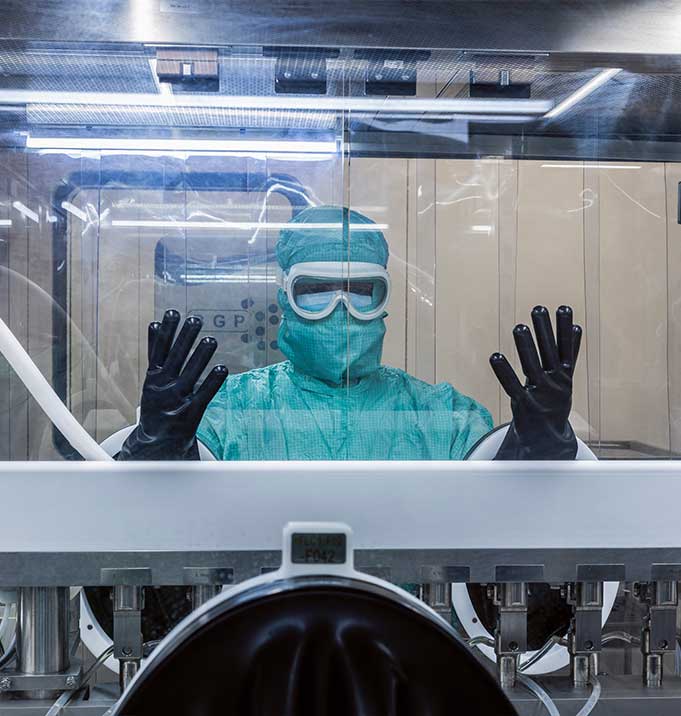Quality Control Testing


BGP Quality Control (QC) objectives
QC labs were designed to comply with GLP & cGMP requirements
The QC labs, spanning 1100m2, adhere to GLP and cGMP standards with about 20 specialized areas. The layout prevents mix-ups and cross-contamination, featuring classifications like controlled unclassified area, class D, C, and B.
Separate air handling units, water supplies, and additional features like airlocks are strategically incorporated. The labs boast up-to-date analytical instruments, all properly qualified and calibrated for QC testing. Managed by a LIMS, data integrity and audit trails align with CFR-21 Part 11.
Periodically testing to ensure that the final products meet its pre-determined standards (purity, safety & efficacy).
Design, develop & validate reliable techniques to assess the quality of raw materials & products.
Assist decision-making in departments (e.g., R&D, manufacturing) by evaluating product quality and manufacturing processes.
Check the process variation during manufacturing to enhance its continuous improvement.
BGP QC can support diverse biopharmaceutical applications.
but not limited to:
Monoclonal antibodies, insulin, and other proteins.
Vaccines
Cell & Gene
Therapeutics
Excipients & Adjuvants
Versatile Techniques

Physicochemical Assays
Utilized to assess the physical and chemical properties of substances, providing valuable insights into their composition.
Immunoassays
Employing immune system reactions for detection, these techniques are pivotal in identifying and quantifying specific substances.
Microbiological Assays
Focused on assessing microbial activity, these techniques are crucial for understanding the impact of microorganisms on samples.
Bioassays (In-vitro & In-vivo)
These techniques evaluate the biological activity of substances, both within controlled laboratory environments (in-vitro) and in living organisms (in-vivo), offering a comprehensive understanding of their effects.

